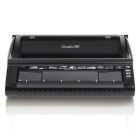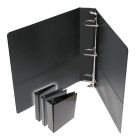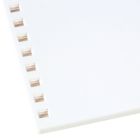Putting Together a Music "Fake Book"
Making up your own charts and putting them together in a "fake book" can be a fun and rewarding experience. Here are a few tips on putting together a great and useful fake book.
Finding Paper:
Depending on the scope of your fake book project, you can either call your local music store and see if they carry staff paper, or find some online and print as many pages as you need. As most fake books are pretty large (and the more songs they include, the better), your local print shop will likely be the best option for getting this done.
Transcribing Basics:
If you are looking to put together a fake book, you probably know a little bit about music theory. Just to review, however, you will want to make sure that you place the bass or treble clef signs at the beginning (which lets readers know what range of instrument the chart is intended for.) Then you will want to make note of the time signature the song is in, 4/4 meaning four beats per measure, ¾ three beats, etc. If you are not sure what the time signature is, see if one of your fellow musicians can help you figure it out, as some of the jazzier tunes can be a little bit complex, and can even contain multiple time signatures. Vertical lines separate what are known as bars or measures, and these comprise the number of beats in the top number of the time signature.
The first, and easiest thing to place in your chart is the chord changes. As you have probably seen a thousand times or more, the chords are written over the staff and are written in letters and numbers indicating the interval (Gmaj7 C9, etc). Note that if you will not be providing a notated melody line staff, you should just place the chords within the staff. In any event, make sure you carefully count the number of chord changes there are per measure and fit the chord names withing the appropriate measure. For instance, if the song goes from G to Em, two counts each, write them both within that measure. Not rocket science, but for anyone who has ever worked with a bad chart, something that is greatly appreciated.
If you do decide to include a melody line, the simpler you can make it, the better. Usually, fake books are made up of standards, the melody lines of which are, more often than not, pretty familiar to most musicians - at least by ear. The idea, then, is to give them a rough outline that is easy for them to read and follow, so don't feel that you have to include every grace note. The lyrics should be as large as you can fit, as that is how most musicians will follow along. Just make as clean and readable as possible, and you will be fine.
Binding it. You have a lot of options here, from simple three-ring binders to the plastic comb or spiral coil versions that you have likely seen a lot of over the years. The things to keep in mind are durability and functionality. If you want to be able to wrap the book completely around, think spiral coil. If you want the pages to stay for a long time, spiral coil and plastic comb are good choices. If you want to be able to add charts while keeping songs in alphabetical order, a basic three-ring binder will do the trick.









